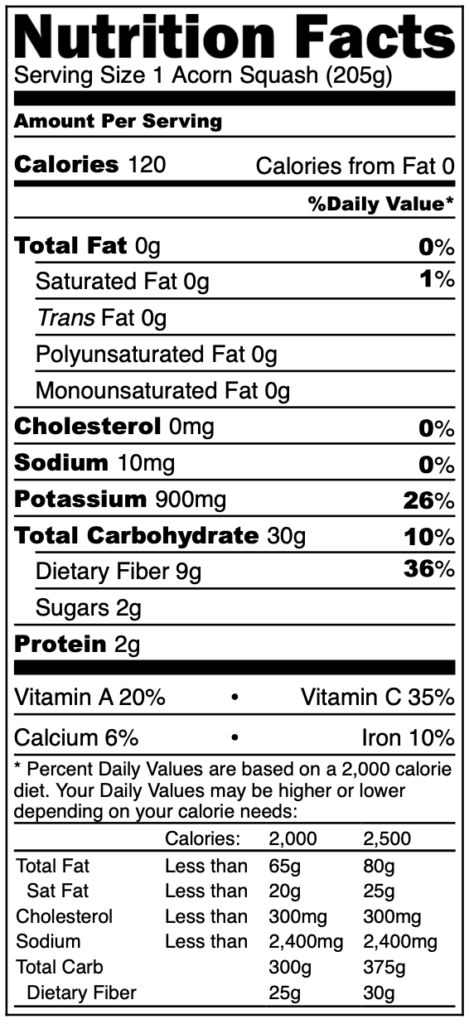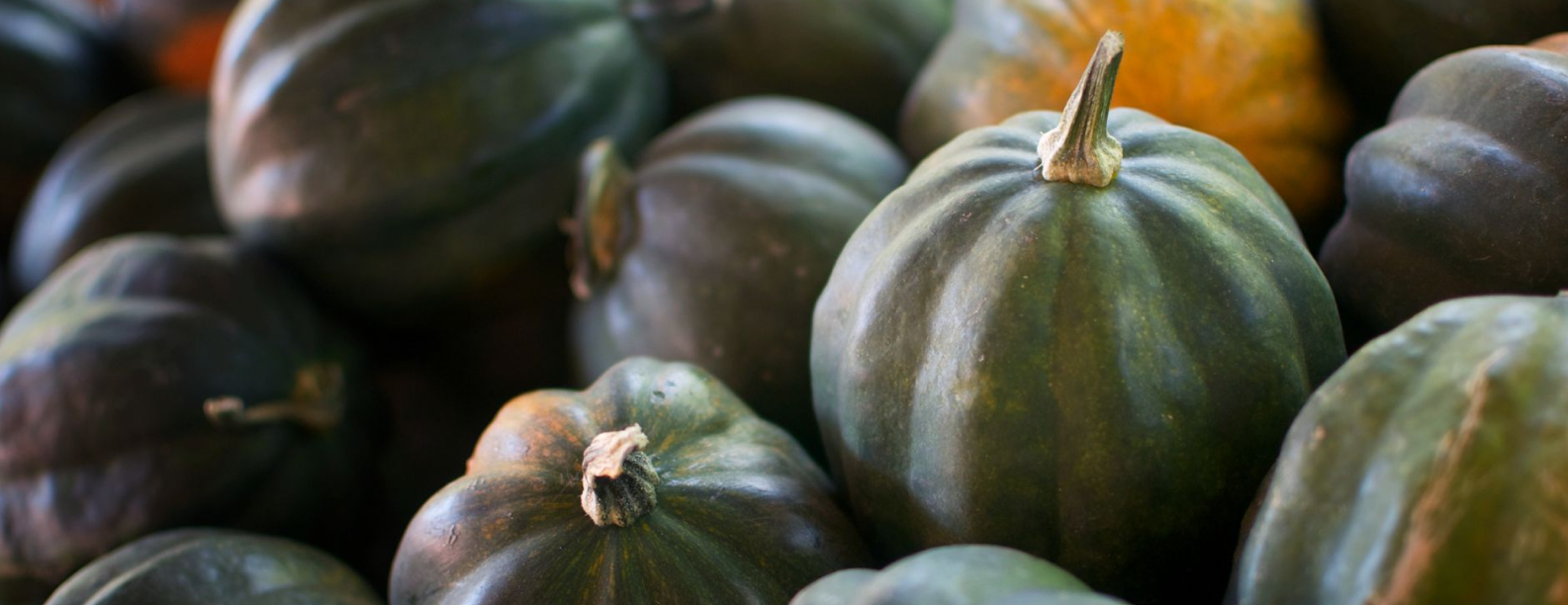
Although considered a winter squash, acorn squash belongs to the same species as all summer squashes (including zucchini and yellow crookneck squash).
Acorn Squash is commonly mistaken for a gourd.
The most common variety is dark green in color, often with a single splotch of orange on the side or top.
Named for its glowing yellow color
However, newer varieties have arisen, including Golden Acorn, so named for its glowing yellow color, as well as varieties that are white. Acorn squashes can also be variegated (multi-colored).
As the name suggests, its shape resembles that of an acorn.
Acorn squashes typically weigh one to two pounds and are between four and seven inches long. Acorn squash is one of the most perishable winter squash, lasting only a few weeks in storage.
Acorn squash is very easily grown. Seeds are started after all danger of frost is past and the soil is warm or within 3 – 4 weeks before the predicted last frost date in the area.
The stem has a prickly feel.
Tops (about three inches) from the end are also edible. They are one of the common vegetable (as greens) in the Philippines.
Roughly 85 days after germinating, acorn squash are ready to be harvested. Curing takes a week to ten days in a sheltered area outside, or a warm dry place like a dry storage space, protected from frost.
Acorn squash is most commonly baked, but can also be microwaved, sauteed or steamed.
The seeds of the squash are also eaten.
usually after being toasted. This squash is not as rich in beta-carotene as other winter squashes, but is a good source of dietary fiber and potassium, as well as smaller amounts of vitamins C and B, magnesium, and manganese. Acorn squash can be used to prepare squash soup.
Indigenous to North and Central America, the squash was introduced to early European settlers by Native Americans.
GreenPoint’s Winter Squash
Take 800 acres of cultivation and are commercialized from September to June.

